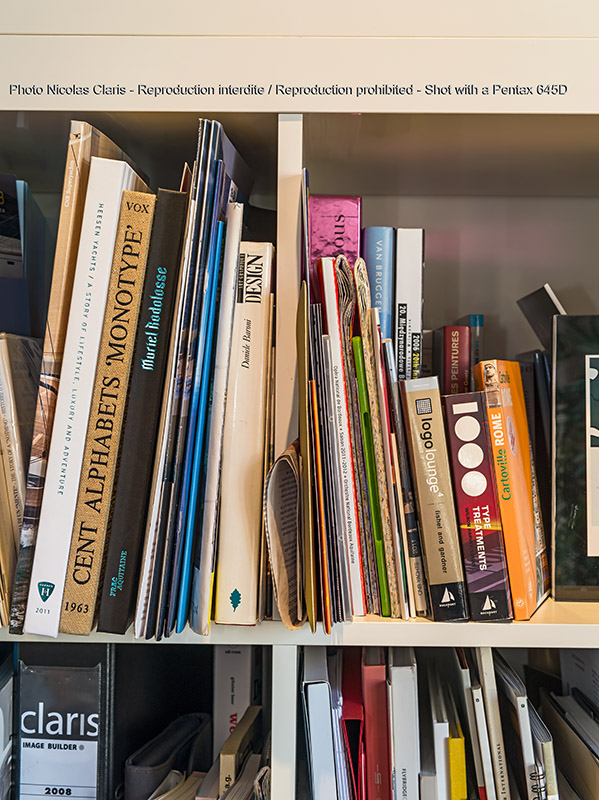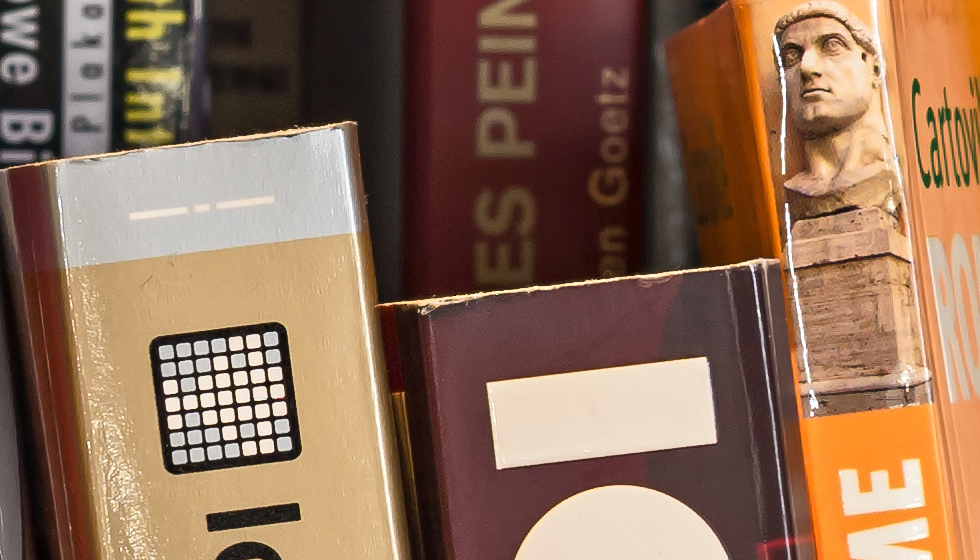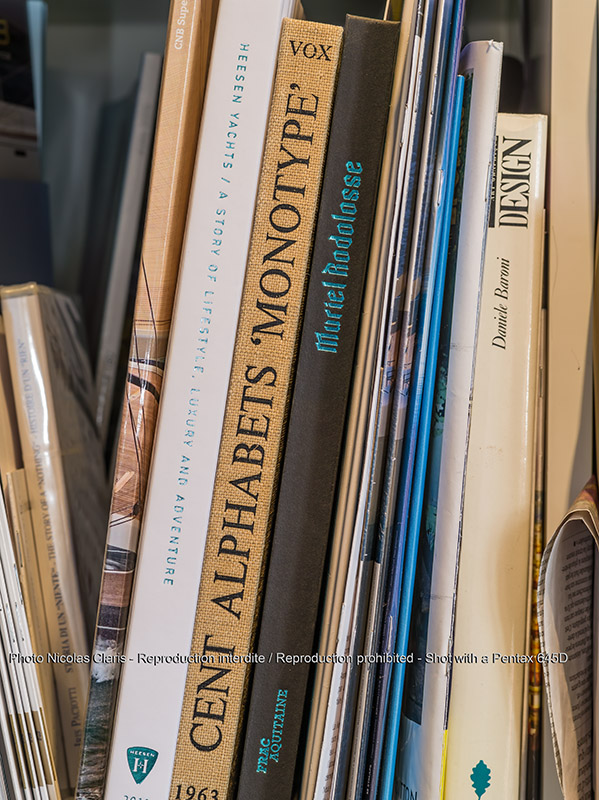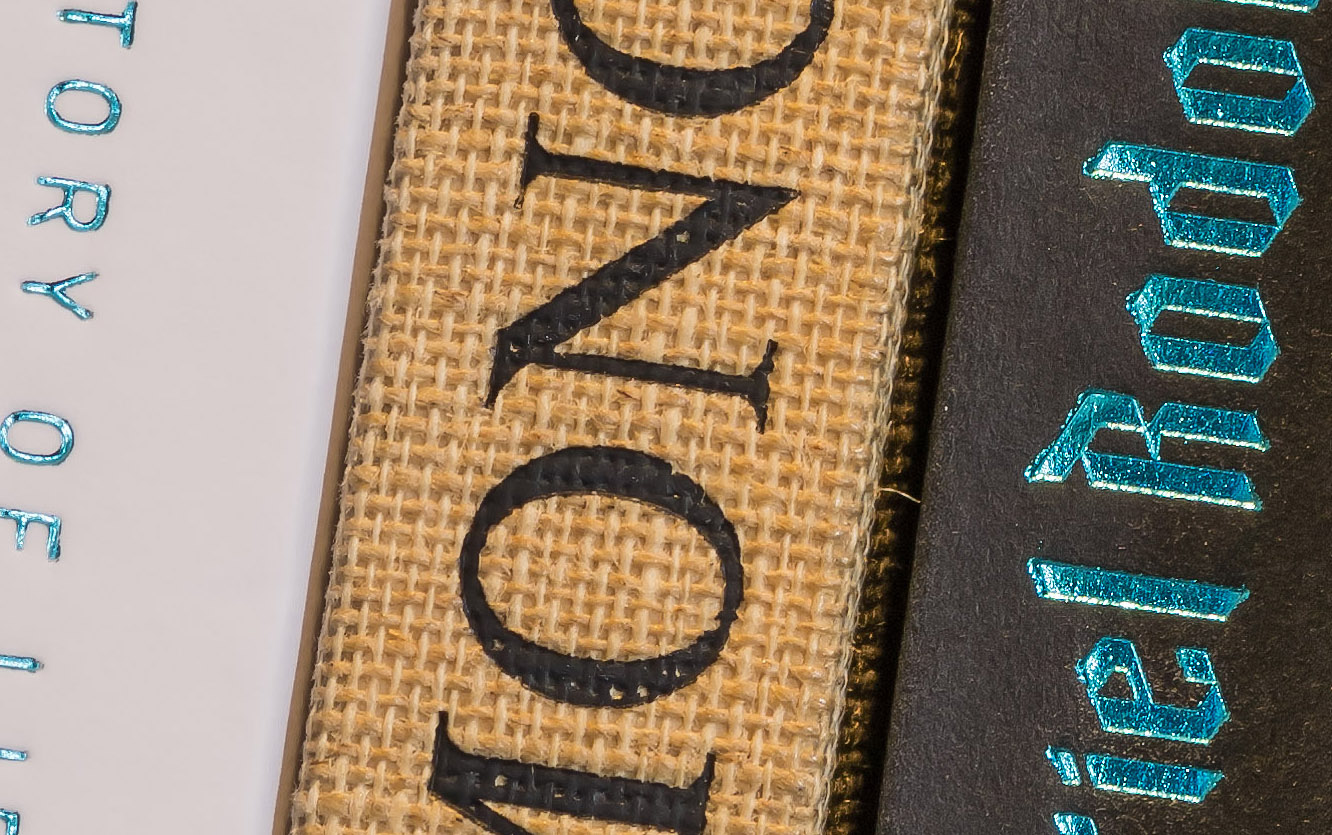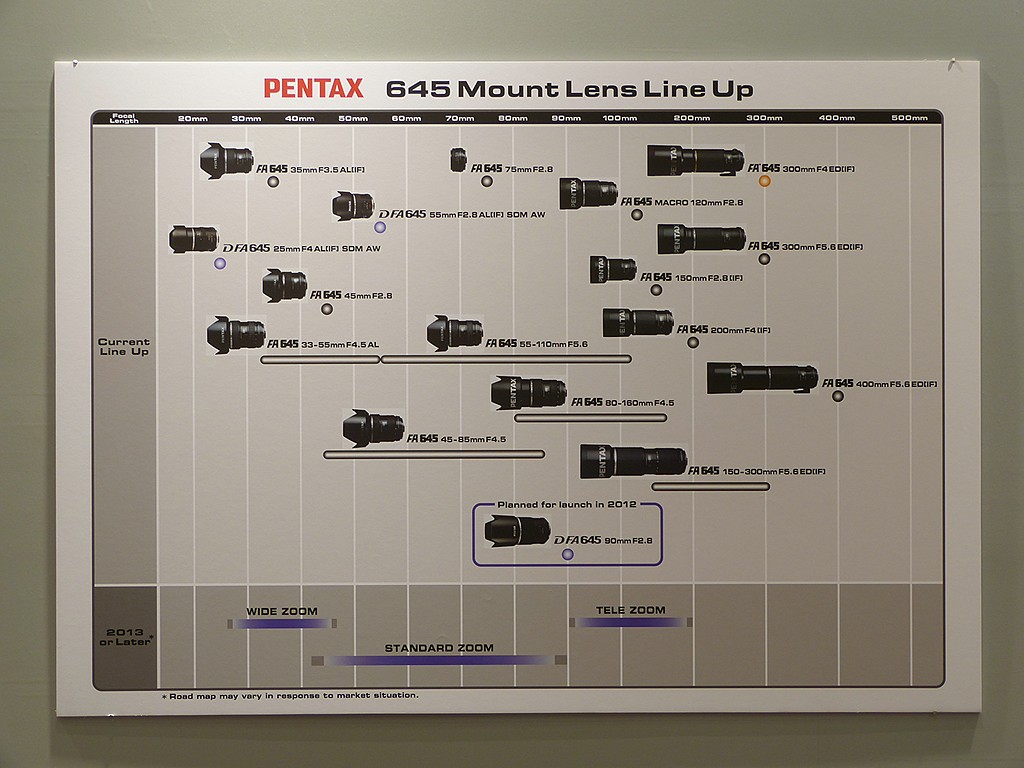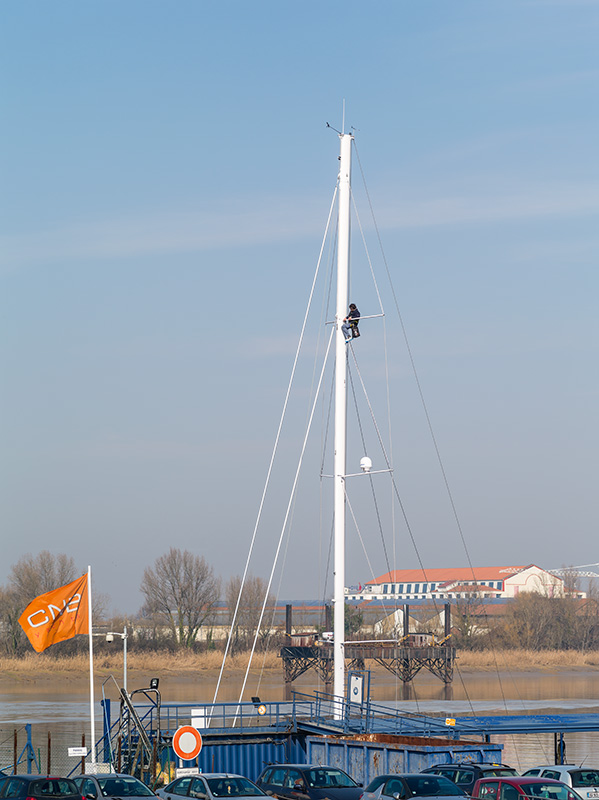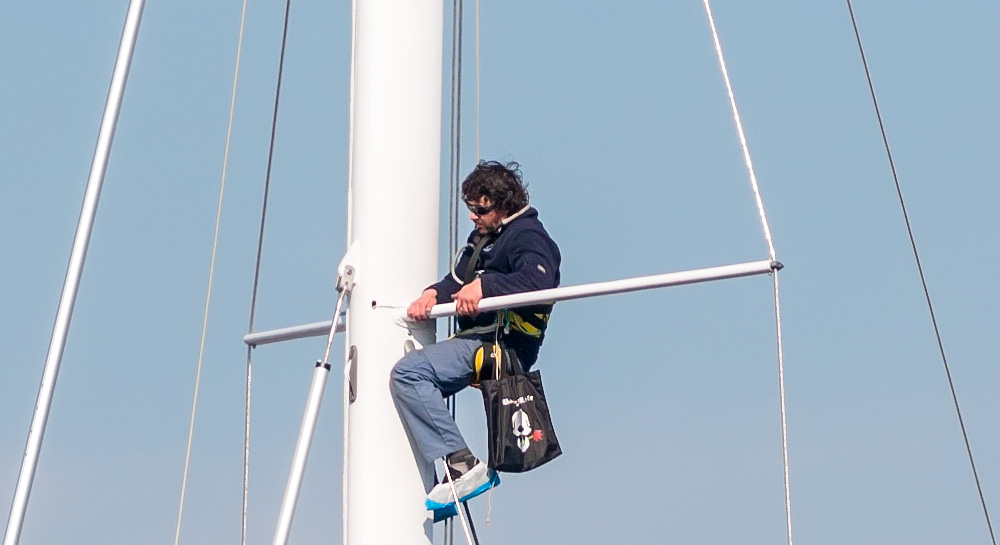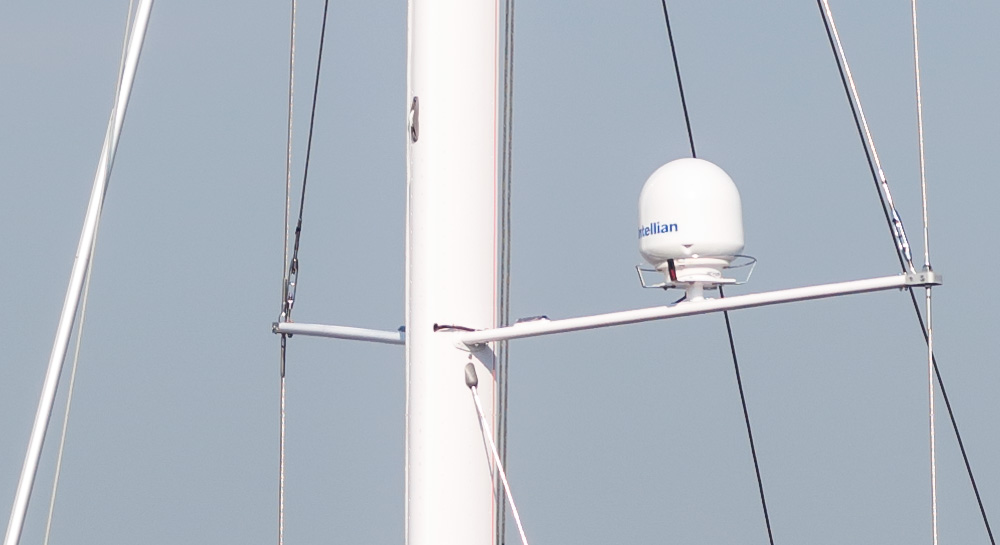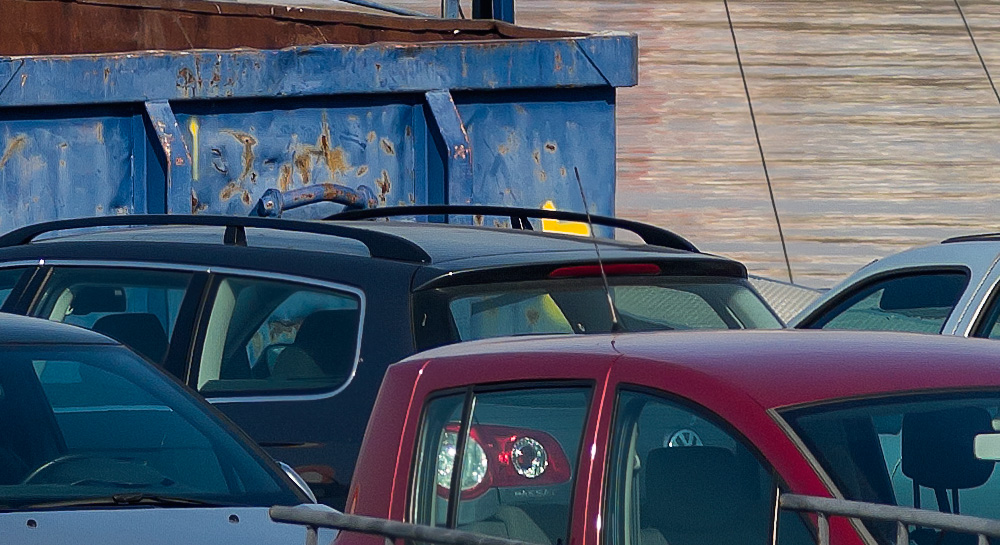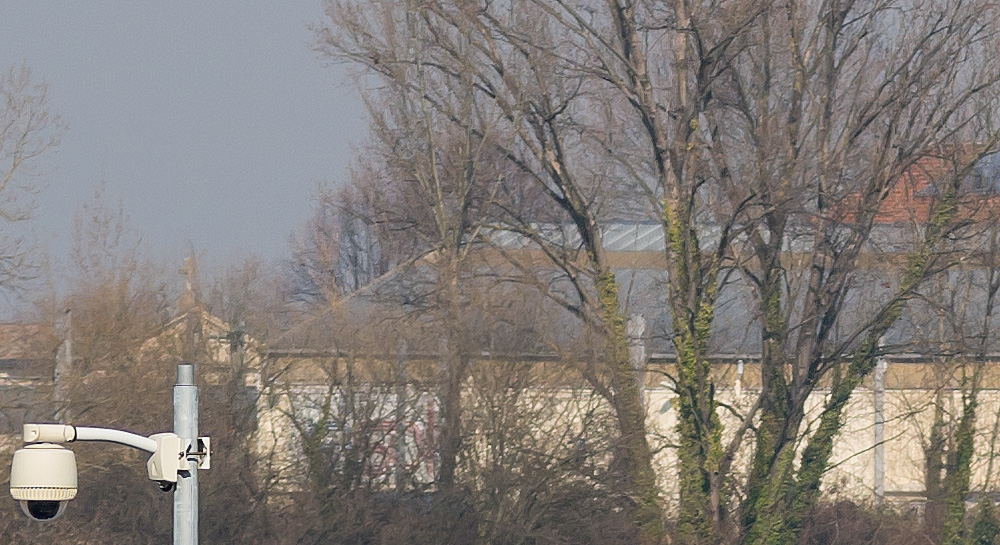nicolas claris
OPF Co-founder/Administrator
The season for boats photo shoots will arrive soon, so I need to get back to the MF way of shooting (one calls that habits) I left at the end of 2088 when I sent back the Sinar ti the factory.
Rereading what I and others wrote in the "Shooting with a Sinar" fora did help me a lot…
However, the Pentax 645D is a completely different machine than the HY6.
One doesn't hold it the same way, there's no back, the view finder is much smaller but at least right is on the right and not to the left! The menus are more dlsr like (a good point!) and the rear screen is pretty accurate!
However 2 one must be careful, IT IS NOT a DSLR! It looks like one, you almost feel like having one in hands but it needs the same care as all MF cameras. Light and speed are needed.
Thread after thread I'll surely let you feel the differences and my findings, can't write a full description in one place at one time… sorry
Then, the next thing is to start training in order to feel having the camera embedded in myself, forgetting the need to remember where are the different buttons, settings etc… being able to automatically set the camera upon to my request for what I want to achieve… This takes time and while it is always possible to do a "side job" when shooting for the clients, this is not very productive and my clients do not pay me to spend paid time for my learning.
Therefore I need to use the rare free time I get to jump on the Pentax 645D (and believe me this is not a punishment!).
Last week-end we took some days off with Marine and went to Rome (Italy).
This city is magnificent!
I knew that so I took the Pentax 645D with one lens only, a SMC D-FA 645 55MM F/2.8.
This lens is delivered as a combo with the 645D and believe me, it's a pure jewel!
Walking in the streets, we got into a market via Cola di Rienzo and I found that it would be interesting to see if the 645D would be able to deliver all these colors!
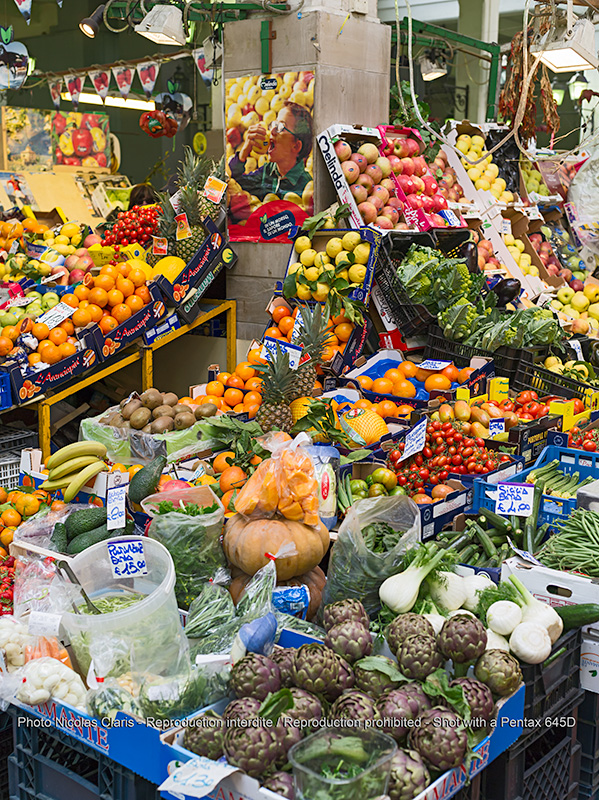
Hand held: ISO 400 - ƒ 6.3 - 1/50 - Aperture priority
100% crop:
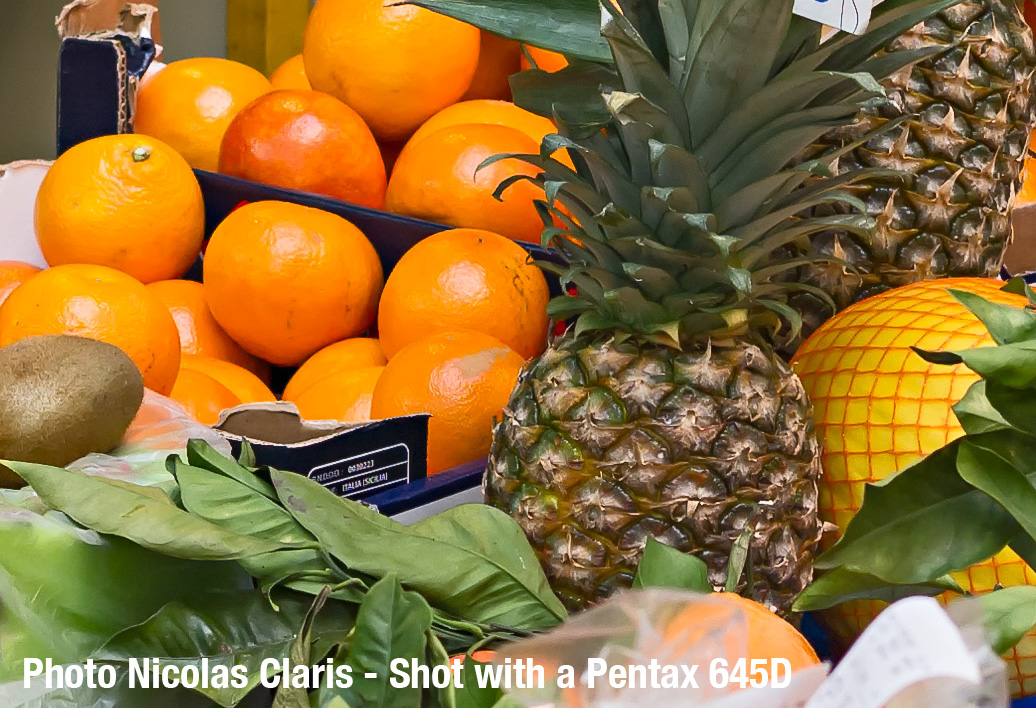
Of course yes!
Full size image
Rereading what I and others wrote in the "Shooting with a Sinar" fora did help me a lot…
However, the Pentax 645D is a completely different machine than the HY6.
One doesn't hold it the same way, there's no back, the view finder is much smaller but at least right is on the right and not to the left! The menus are more dlsr like (a good point!) and the rear screen is pretty accurate!
However 2 one must be careful, IT IS NOT a DSLR! It looks like one, you almost feel like having one in hands but it needs the same care as all MF cameras. Light and speed are needed.
Thread after thread I'll surely let you feel the differences and my findings, can't write a full description in one place at one time… sorry
Then, the next thing is to start training in order to feel having the camera embedded in myself, forgetting the need to remember where are the different buttons, settings etc… being able to automatically set the camera upon to my request for what I want to achieve… This takes time and while it is always possible to do a "side job" when shooting for the clients, this is not very productive and my clients do not pay me to spend paid time for my learning.
Therefore I need to use the rare free time I get to jump on the Pentax 645D (and believe me this is not a punishment!).
Last week-end we took some days off with Marine and went to Rome (Italy).
This city is magnificent!
I knew that so I took the Pentax 645D with one lens only, a SMC D-FA 645 55MM F/2.8.
This lens is delivered as a combo with the 645D and believe me, it's a pure jewel!
Walking in the streets, we got into a market via Cola di Rienzo and I found that it would be interesting to see if the 645D would be able to deliver all these colors!

Hand held: ISO 400 - ƒ 6.3 - 1/50 - Aperture priority
100% crop:

Of course yes!
Full size image

